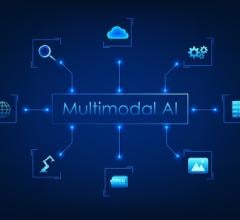BLOG: Real-time Intelligence in Reporting and Communication

AI-powered models that augment radiologists’ expertise in interpreting diagnostic imaging often capture the lion’s share of industry attention. That is understandable given the benefits they provide in worklist prioritization, completion of time-consuming measurements, and patient diagnosis and treatment. But a range of other AI technologies are quietly gaining widespread acceptance because they address in real-time many of the everyday challenges that radiologist face in reporting and communicating findings and recommendations to referring physicians.
AI-powered natural language understanding and other innovations now generate structured data from unstructured narrative text, deliver contextual clinical guidance when most helpful during the reporting workflow, provide quality and accuracy checks, connect disparate systems with synchronous data exchange and reduce workflow interruptions. Together, they are adding significant value to radiology reporting and integrating diagnostic imaging more closely into patient care.
“Real-time intelligence in the workflow is critical,” said Karen Holzberger, senior vice president and general manager of Nuance Healthcare’s diagnostic solutions business. “Successful adoption of AI in radiology requires a combination of innovations and solutions that are intelligently integrated into workflows and that enable the full clinical value of radiology in improving patient care and outcomes.”
Beyond image analysis, using AI to improve the quality and flow of radiology reporting downstream and streamline its communication and consumption by care teams and patients is becoming a primary factor in integrating radiology into the care cycle and opening important new areas of clinical applications such as precision medicine.
“In the past, radiologists spent a lot of time searching for patient histories and other contextual clinical information to help them interpret and report findings,” Holzberger said. “With new capabilities and automation, radiologists can move beyond being reporters of narrative and numerical data to being expert curators of a central part of the overall patient story with more detailed findings and consistent, evidence-based recommendations.”
Minimizing Distraction
Recent analysis suggests radiologists are interrupted once every 4 to 12 minutes during regular business hours, generally with questions and consult requests. Each phone call or in-person interruption disrupts focus, takes time away from the current interpretation, and requires additional time to reorient to the active report. The impact is significant, from higher rates of exhaustion and burnout to lower productivity and increased risk of diagnostic or reporting errors. By integrating intelligent filtering and prioritization of communications into radiologists’ workflow in real time, they can manage interruptions more effectively and focus on current reporting tasks.
“Our collective goal in the industry is keeping the radiologists’ eyes on patient images and on delivering timely and actionable reports for patient-centered care,” Holzberger said.
Nuance PowerConnect Communicator streamlines communication and optimizes messaging to give radiologists the ability to proactively manage interruptions. Doing so facilitates collaboration among radiology team members to tap into differing levels of expertise in imaging modalities, familiarity with medical specialties or specific providers, patient histories and other areas.
Streamlining report creation
In PowerScribe One, context-aware language understanding technology converts unstructured dictation into structured data and supports Common Data Elements. That helps reduce manual and repetitive data entry as well as reporting variability. The resulting data can be integrated into the EMR, used for tracking compliance with follow-up recommendations or be applied in clinical analytics.
AI-powered integrations and speech recognition also enable radiologists to navigate reports, access patient histories and data from the EMR and PACS for clinical decision support.
“You have AI driving advanced language understanding, image characterization, and non-pixel-based analysis to automate content generation and augment radiologists’ expertise. AI provides evidence-based clinical intelligence to support their findings and follow-up recommendations,” Holzberger said. “The combination of technologies helps the radiologist improve reporting accuracy and get to the correct diagnosis more quickly.
Facilitating Sharing with Disparate Systems
The ability to share information in real-time between disparate systems is a game-changer. PowerScribe One can communicate with other systems a radiologist uses, such as PACS, image viewers, and third-party AI solutions to bring essential data front and center. Once captured in a report, the information is immediately available to downstream systems. Holzberger sees this holistic, integrated approach to data as the way forward as health systems expand adoption of new technologies.
“Radiologists have always embraced the adoption of new technology, from moving away from transcription to front-end speech recognition and self-editing, or the adoption of PACS systems,” Holzberger said. “What Nuance brings to the table is a combination of years of domain and technical expertise, proven product innovation and a truly patient-centered approach. In the end, it is about helping radiologists advance the state of the art of data-driven radiology reporting to improve care access, outcomes, and costs.”
Editor’s note: This blog is the third in a four-part series about real-time intelligence in the radiology workflow, to be published monthly. The first blog can be found here, and the second blog can be found here. To learn more, visit nuance.com/healthcare/diagnostics-solutions



 December 09, 2025
December 09, 2025 








